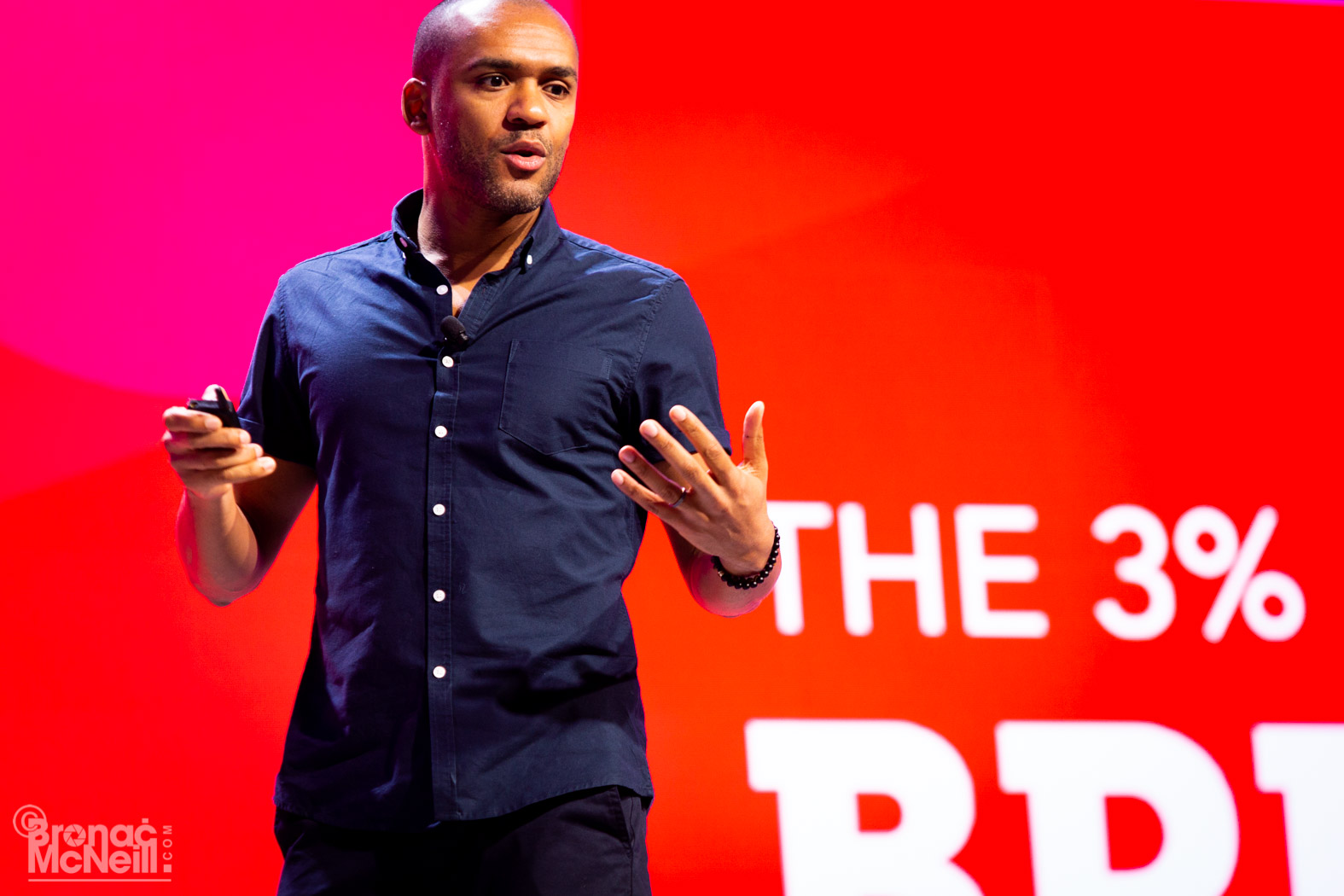
Minding the Backlash: Turning Negatives into Positives in Online Activism
Adia is a Senior Copywriter based in Atlanta, GA. She’s a proud graduate of both Howard University and The Creative Circus. Outside of advertising, she enjoys: buying Black, practicing yoga, trying to keep her plants alive, reading, going to concerts, collaborating with other creatives, and re-discovering her hometown.
How appropriate that a talk on digital-driven social initiatives and the backlash they may evoke be introduced by Havas North America’s Paul Marobella. If you’ve been keeping your ear to these advertising streets, you already know what that’s about.
After lightly addressing his own agency’s recent brush with public backlash, Marobella introduced Alain Sylvain, Founder and CEO of Sylvain Labs. With clients such as Waze, Spotify and Airbnb, Sylvain is well aware of the challenges of aligning a brands values with its public-facing actions, as well as how said actions can and will draw dissent. However, he took the stage to reassure the audience that backlash is not a death sentence, but rather an opportunity for growth.
Sylvain began his talk on the force that is online activism with a pretty interesting analogy: an active volcano. Upon a recent trip to Hawaii’s Big Island, Sylvain took note of how a volcano causes both destruction and life. The lava took out everything in its path, giving way to new plants that sprout throughout the terrain. To Sylvain, this was the perfect illustration of how negative responses and results can be the precursor to something new and bountiful.
When your social activism initiatives result in backlash, it’s merely a chance for your brand to take a step back. And if approached properly, the destruction can be turned into something greater than previously imagined. The rub is that requires brands, companies and leaders to face the backlash head-on.
Before Sylvain shared his tips on how to bounce back from the negative, he refreshed the audience on the positives of social and digital activism, and also that as a society we’re headed in the right direction. Sylvain shared statistics on how matters such as childhood poverty, violent crimes, teen pregnancies and the like are steadily decreasing. Comparisons between civic movements then and now flashed across the ballroom screens as he spoke: the Civil Rights Movement compared to Black Lives Matter; the women’s liberation movement of the ’60s with 2017’s Women’s March; the fight for Earth Day along with environmental activism of today. The following quote from Rev. Dr Martin Luther King Jr. was shared to remind us that we’re doing okay: “The arc of the moral universe is long, but it bends towards justice.”
It’s easy for the masses to point out what’s wrong with tech-lead social initiatives, but Sylvain was clear to point out what it does beautifully. Tech-lead initiatives allow for bottom-up narratives, viral human storytelling, and real-time mobilization. Social and digital platforms permit citizens on the front-line to populate the media, which means our news is coming from the people experiencing the events rather than media outlets that report filtered and altered information in the interest of corporations and/or ratings. The stories of everyday people and activists are shared quickly and widely. Sylvain asked, “What would it look like if Stokely Carmichael had a Twitter feed?” (As a Howard University grad, I let out a resounding “yaaasss” as I took notes.) Sylvain also reminded us that the Women’s March and the initiatives of the Parkland students were facilitated through social media. Long story short, tech gets stuff done.

However, no good deed goes unpunished. We don’t need to be reminded that online kickback is inevitable, but we do need reminding why it happens. Only then can we begin to make sense of it and use it to our advantage. Sylvain explained that backlash is a human reaction and that it’s natural to fight when we feel like our livelihood and sense of normalcy is threatened. The fight for reproductive rights is met with the fight to de-fund Planned Parenthood. One president fights against climate change, the next for the resurgence of coal dependence. The right to vote vs. voter suppression. The afro vs. the Jheri curl.
The problem is that these natural inclinations to fight back are actually weaponized discomforts that aim to stagnate or regress society-at-large.
Identifying backlash and how it works is how any brand can begin to make sense of the negativity and turn it around. According to Sylvain, backlash appears as three things: leadership vilification (J. Edgar Hoover made an art of this), false equivalencies (e.g. reverse racism), and victim-hood appropriation (sympathy drawn for our newest Supreme Court justice). Regardless of how one views each tactic, it’s hard to dispute their collective effectiveness.
Instead of getting discouraged by the destruction these forms of backlash may cause, Sylvain encouraged the audience to re-appropriate backlash in three ways. First, seduce the backlash. Know that it’s coming and get ahead of the story. Sylvain used Caitlyn Jenner’s Vanity Fair interview as the perfect example. Second, stoke the backlash. Take the things happening in culture and use it to your advantage. For example, Ben and Jerry’s continue to unabashedly release flavors that address current civil and social issues time after time. Third, hijack the backlash. Remember, popular phrases like “Nevertheless, she persisted” and “Nasty woman” were originally hurled as insults.
With those three tips, Sylvain left the audience with actionable and encouraging ways to move through backlash, and create bigger and better ways to push progress. We won’t always get it right, but that doesn’t mean we have to stop trying. See the vitality with the violence, and allow new things to sprout from destruction. In a world where digital will only continue to drive how we communicate, organize and execute, these seem like some solid points to consider.




